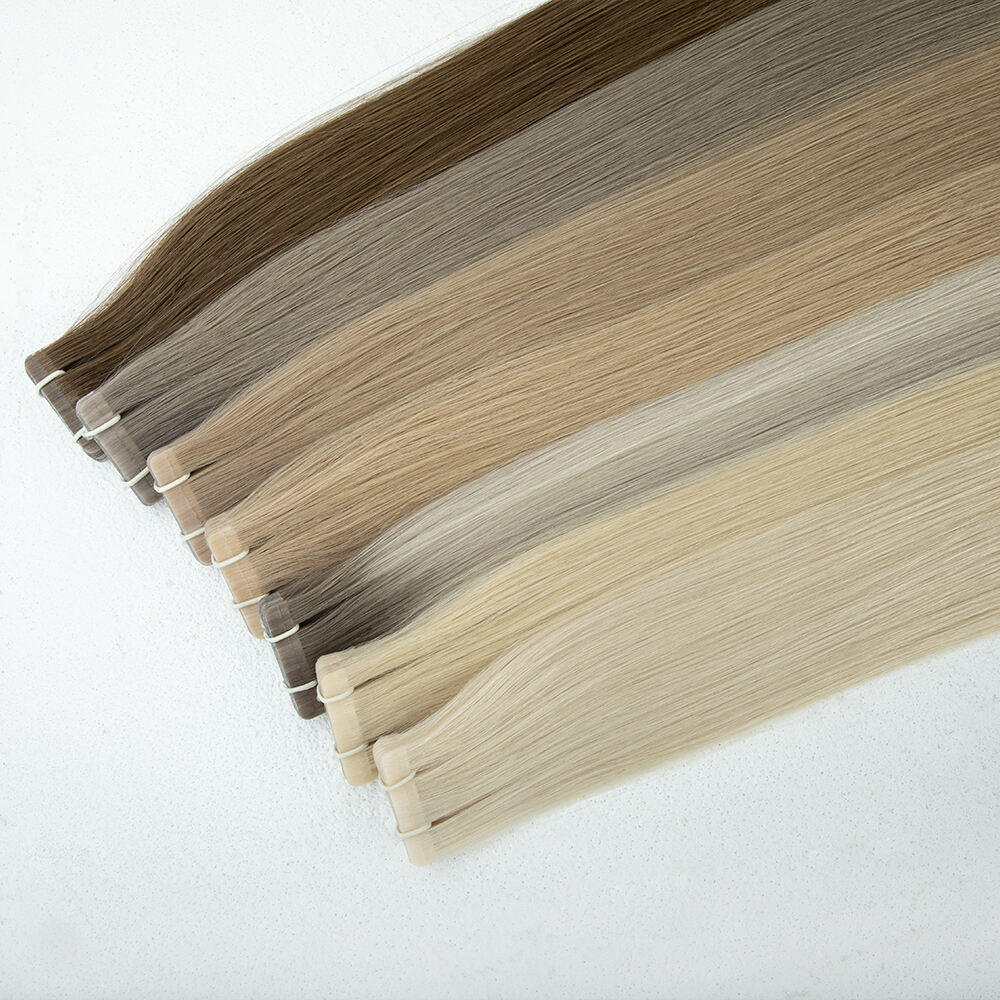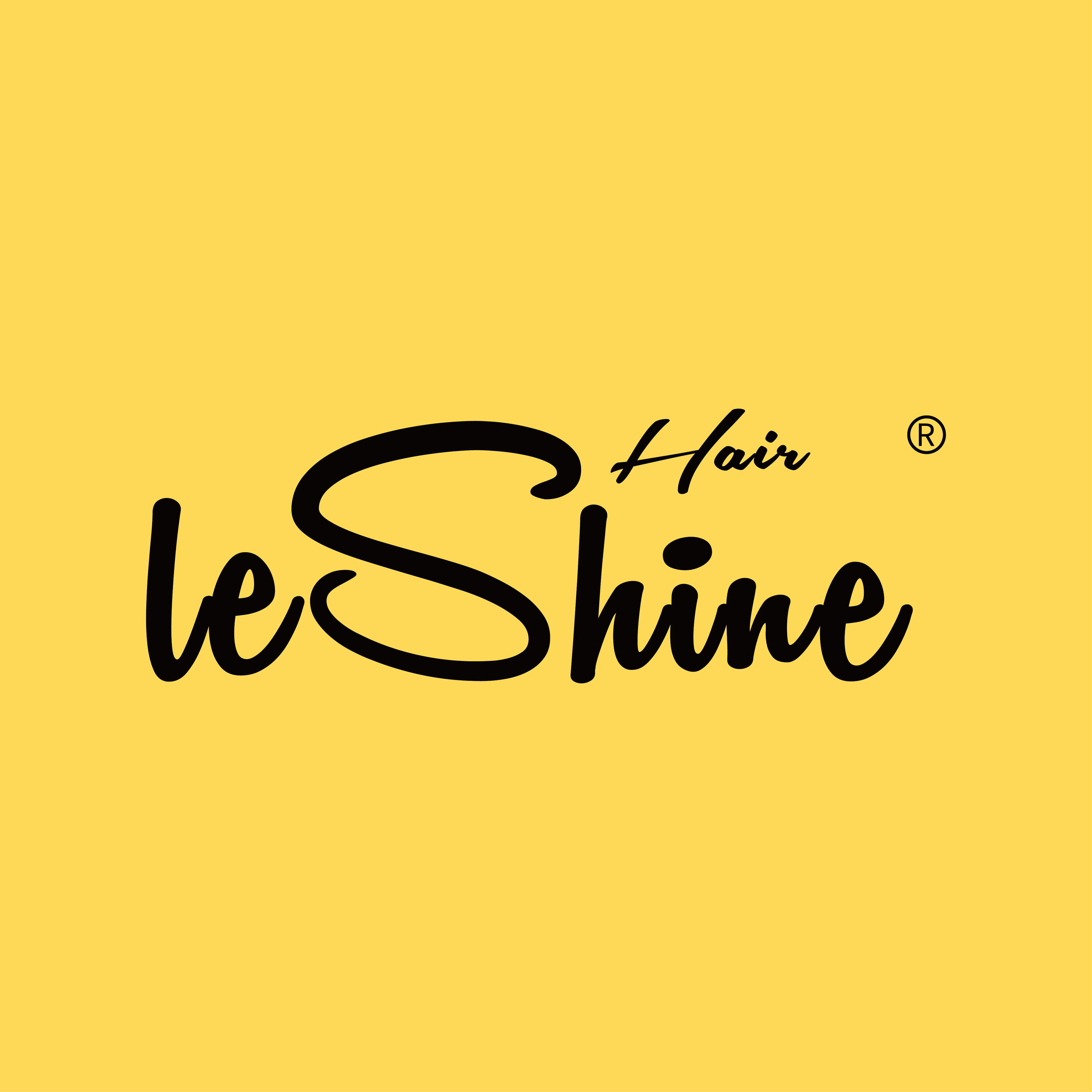
Understanding Weft Hair Extension Construction
Weft hair extensions are wefts of hair that are sewn onto a fine weft of fabric and this type of hair extension is made by professional with professional hair material. You can pull the scalp out from the strip, and adjust the band, which wraps the band around your head, in whatever position you prefer The fact that it is sewn on a silk cap means that it can be adjusted, and more importantly, that it breathes really well You can achieve perfectly blended hair The hair underneath will not be exaggerated as the strip will cover it A breathable hairline that allows less hair, so it's more breathable, comfortable and realistic than a traditional wig The elastic band provides a stretchy feeling The adjustable strap provides a more comfortable plus super fine elastic body flat weaving band, less pressure protects your edges by including a not turn back technique! How something is stitched – by machine in parallel rows, or hand-tied with individual knots, for example – is directly related to how durable and flexible the mattress will be.
Machine-made wefts feature reinforced stitching for long-term wear, ideal for thicker hair types needing volume. Hand-tied alternatives lay flatter against the head, blending seamlessly with fine or thin hair. Modern wefts often integrate silicone microbeads or hypoallergenic adhesives for secure attachment without damaging natural strands.
Three primary application methods exist:
- Sew-in wefts attach to braided tracks using medical-grade thread
- Tape-in systems use double-sided adhesive strips for repositionable wear
- Clip-in options offer temporary volume boosts with pressure-sensitive clasps
Selecting the right weft construction depends on hair density, lifestyle, and desired longevity. Innovations like breathable, lightweight polyester bases now address common concerns about scalp irritation, making weft extensions a versatile solution for 85% of hair types according to 2023 trichology studies.
Types and Characteristics of Weft Hair Extensions
Weft hair extensions offer diverse construction methods and material options to match different hair types and lifestyles. These variations significantly impact comfort, durability, and styling versatility, making it essential to compare key categories before selecting extensions.
Machine-Made vs Hand-Tied Weft Comparison
Machine-Sewn Machine-sewn wefts are the hair industrys best kept secret.With a touch of TLC you can ensure a manageable and secure sewn in of the hair. The process generates robust multi-layered units which adhere using silicone beads or sewn braids without the need for adhesive. Hand tied options are where each hair has been hand tied to an ultra thin silicone base providing organic movement which is perfect for people with very fine hair. They both need professional maintenance every 4-6 weeks but thinner hand-tied wefts will have less tension and bulk on the scalp. Machine-made varieties are great for durability and thickness whereas hand-crafted ones value smoothness of blending, and lightness for comfort.
Virgin Hair vs Synthetic Fiber Options
Virgin Human Hair, particularly 100% Remy cuticle kept strands is the creme de la creme of hair that lasts 6-12 months with no or minimal shedding. This premium fiber can be styled straight and has heat resistance up to 350°F/177°C and natural texture that can mimic the most costly of human hair. Synthetic wefts are much cheaper, 30-60% the cost of human hair wefts, but tangle and get damaged easily if subjected to high heat; they need to be replaced every 2-4 months. Human extensions can be colored and heat styled, and they just look more natural than synthetic hair extensions, however human hair is more expensive than synthetic, and the toll taken on human hair is much greater. Synthetic options are a good cost solution for temporary use, but cannot offer styling (eg cuts, texturing).
Damage-Free Application Methods for Weft Extensions
And for natural hair divas who want thicker locks but without the damage, there are two main damage-free methods for weft systems: the masterful bead method and noninvasive tape-in installations. They both cut out damaging chemicals, excessive tension and thermal glues – some of the causes of breakage according to studies on hair health (Ponemon Institute 2023). It is important to apply correctly for even weight distribution, no tension on follicles and it will not cause Traction Alopecia, but natural looking density.
Beaded Sewn-In Technique Walkthrough
Beaded Hair Extensions: Beaded weft hair is a very short-term method of hair which can be achieved with either hair wefts or hair bulk. With special pliers, technicians fasten on the beads without braiding natural hair – making substantial anchor points for the virtually weightless jewel stones to move naturally as you play. Recent advances have included silicone-lined beads to protect against damage from friction. Adjusts positioning as the natural hair grows, keeps it feeling comfortable and causes no matting.
Heat-Free Tape-In Installation Process
Reversible bonds of natural hair are achieved using medical grade adhesive tapes and thin weft bases. Once they have been installed to fit the client's occipital bone curvature, pressure-activated bonds cure immediately – no glue guns or heat required. Removal is with solvent, which gently dissolves the adhesive, leaving your extensions and natural hair undamaged. Ideal for fine-haired or particularly sensitive clients who don’t want to feel their hair extensions, tape-ins are one of our most requested services — thanks in large part to how quickly and comfortably they are installed.
Essential Care Routine for Longevity
Specialized Cleansing Product Recommendations
Weft extensions need sulfate-free shampoos that does their job of cleaning well yet does not take away natural oils. Choose pH-balanced formulas (4.5–5.5 is perfect) to preserve the integrity of the hair cuticle and extension bonds. Mid-length through the ends weekly conditioning treatments help to keep the hair from getting too dry without making the roots go flat. Stay away from alcohol based products as they may break adhesive bonds in tape-in systems.
Heat Styling Damage Prevention Strategies
Use a thermal protectant spray to prevent heat damage from styling tools. Avoid hot tools above 300°F—those can melt tape-in adhesives or singe hand-tied wefts. For styling without heat, roll damp hair on foam rollers overnight, or try no-heat tension styling with hair sticks. Be sure to detangle thoroughly with a wide-tooth comb to minimize friction when blow-drying.
Styling Versatility of Weft Systems
Weft hair extensions will transform your ability to style with ease! An ultra slim, lightweight design that adds volume without bulk – great for braids and ponytails, or super chic buns. They're thin — much thinner than the heavier ones that sit directly on top of your scalp — so you won’t see any seams when you part and wear a high updo like the one above. This mechanics is what allows the wearer to go from relaxed daywear to a more dressed up situation in a few minutes and continue to have them move in an organic way.
Updo Transformations Without Bulk
All the elegance of an updo, but seamless with natural hair. Weft systems do this by providing weightless attachment points without tension to distribute weight evenly so that the hair is not pulled. They have a bendable base that grips on comfortably, and are simply worn by moulding them to the shape of the head, allowing tight buns and plaited crowns without bulk at the base! And for seamless results - section horizontally across the nape and vertically along the crown to determine the most natural placement This ensures perfect blend and balance; preventing the rooting from looking too heavy or obvious.
2025 Hair Extension Trend Forecast
The hair extension industry adopts revolutionary environmental trends in 2025 focused on environmentally friendly production and transparent sourcing. The demand of consumers pulls the biggest industry players into circular production and ethically sound employment. New solutions aim to reduce waste, including water and chemical usage, by extending stretch life, while offering new capabilities and performance. This thought through transformation is so much more than skin deep—it ties your beauty choices to a broader ecosystem awareness.
Eco-Friendly Production Innovations
State-of-the-art innovation innovations consist of closed-loop water recycling systems, which save as much as 40% of water use throughout the process. Plastics are supplanted by biodegradable polymers based on plants for packaging these days, and ethically sourced human hair that has chemical treatment is sterilized without chemicals. Achievable carbon-neutral shipping options and solar-powered factories also minimize environmental impact throughout the entire production process — with measurable emissions reductions that do not sacrifice quality.
FAQ
What are the main types of weft extensions?
There are three main types of weft extensions: sew-in, tape-in, and clip-in. Sew-in wefts attach to braided tracks, tape-in systems use adhesive strips, and clip-in options use pressure-sensitive clasps for quick application.
What is the difference between machine-made and hand-tied wefts?
Machine-made wefts are ideal for thicker hair types needing volume and durability. Hand-tied wefts lay flatter, blending seamlessly with fine or thin hair. They require professional maintenance every 4-6 weeks.
How long do virgin hair extensions typically last?
Virgin human hair extensions can last between 6-12 months with minimal shedding if properly cared for.
Can synthetic hair extensions be styled?
Synthetic extensions are not ideal for heat styling as they can tangle and get damaged easily. They are best used temporarily and need to be replaced more frequently than human hair extensions.




